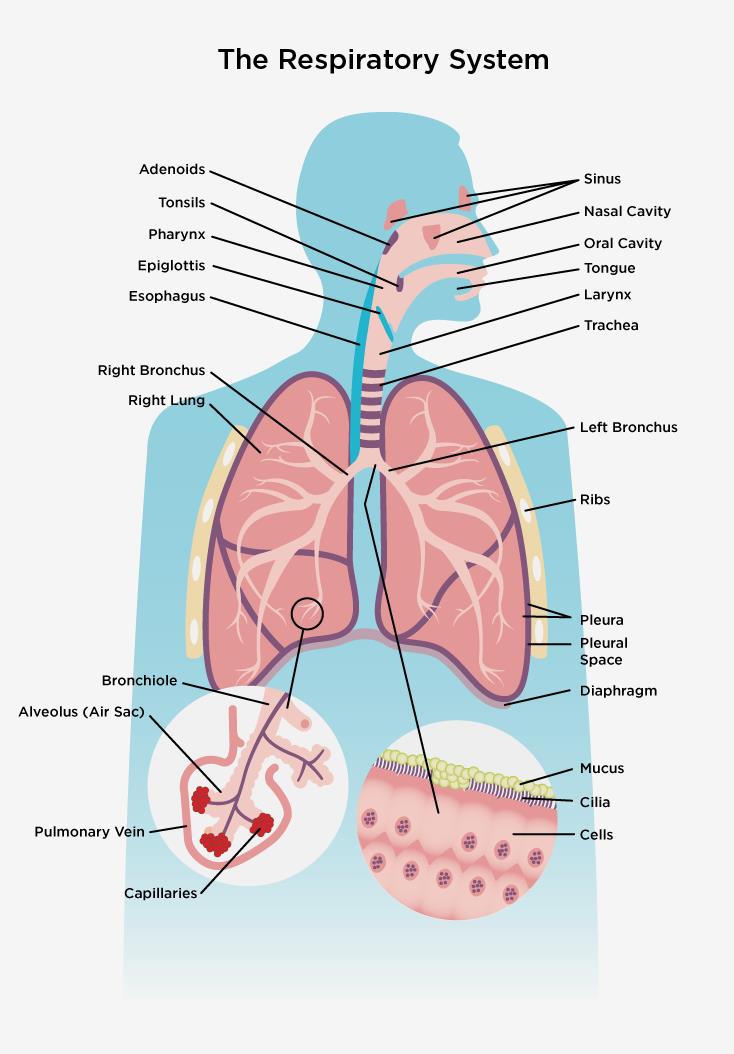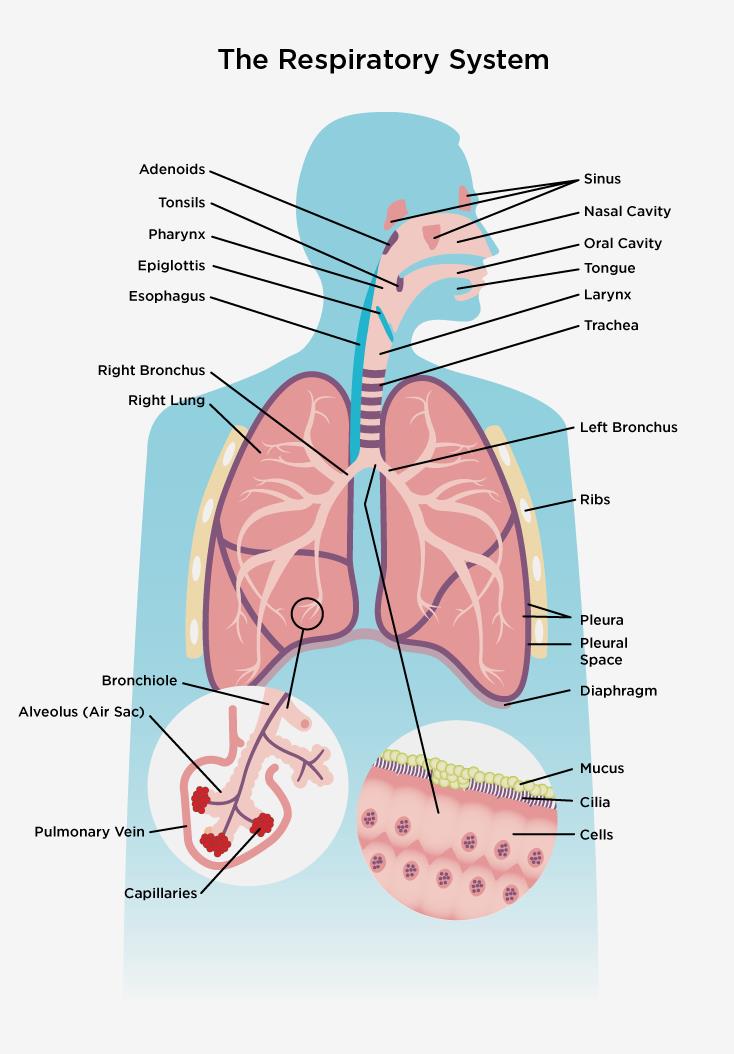Your respiratory system (enlarged)

Upper respiratory tract
Your sinuses are hollow spaces in the bones of your head. Small openings connect them to the nasal cavity.
Your sinuses help to regulate the temperature and humidity of air your breathe in, as well as to lighten the bone structure of the head and to give tone to your voice.
Your nasal cavity (nose) is how most outside air enters your respiratory system. The hairs that line the inside wall of your nose are part of the air-cleaning system.
Air can also enter through your oral cavity (mouth), especially if you have a mouth-breathing habit or your nasal passages may be temporarily blocked.
The pharynx (throat) collects incoming air from your nose and mouth and passes it downward to your trachea (windpipe).
The larynx (voice box) contains your vocal cords. When moving air is breathed in and out, it creates vocalizations.
Lower respiratory tract
The trachea (windpipe) leads from your pharynx to the lungs.
The trachea divides into the two main bronchi (tubes), one for each lung. The bronchi, in turn, subdivide further into bronchioles.
Your lungs are located on either side of your sternum in your thorax. Your lungs are divided into five main sections (lobes): the right lung has 3 lobes, and the left lung has 2 lobes. The heart is nestled between your lungs. The heart and lungs are protected by your rib cage.
At the end of the bronchioles are the alveoli (plural of alveolus). Embedded in the alveoli are tiny capillaries, blood vessels where gas exchange occurs between your blood and the air you breath in.
Read more about how breathing works
Your respiratory and immune systems
Your respiratory system also plays an important role in keeping your body healthy and free of bacteria, viruses and other substances that can cause illness.
How your respiratory system prevents infection
Your respiratory system is in constant contact with your environment. Many different pathogens (things like bacteria and viruses that can cause illness) can enter your body through your respiratory system.
The mucus layer that lines your upper respiratory tract help trap foreign particles. The cilia (tiny, hair-like filaments) that line your respiratory tract help to move the trapped particles out of your respiratory system. Sneezing and coughing are two examples of how your body gets rid of these invaders.
Cells within your lungs produce white blood cells called macrophages that engulf or "eat up" foreign cells as part of your immune response.
Your tonsils and adenoids are parts of your immune system that are found in the throat. Tonsils are similar to lymph nodes. They contain many white blood cells and help filter out bacteria that enters your nose and mouth.
Adenoids play an important role in keeping young children healthy. Adenoids contain many white blood cells and also help to trap germs that enter the mouth and nose. Adenoids begin to shrink in size around age 7 or 8, and are gone by adulthood.
Your respiratory and circulatory systems
Your respiratory system works closely with your circulatory system.
Your circulatory system brings blood to and from the lungs, where gas exchange occurs. Blood without oxygen (deoxygenated blood) arrives is the lungs via the pulmonary artery. In the lungs, oxygen from the air we breathe enters the blood via the alveo-capillary bed. Oxygen-rich blood then returns to the heart via the pulmonary vein, where it is then pumped to tissues and organs throughout the body. The alveo-capillary bed is also where waste carbon dioxide is filtered out of the blood and into the lungs, where our body gets rid of this gas by exhaling.

